Labor’s promise to end health funding wars with 50-50 split with states still five years away
A worker on less than $100,000 a year now would pay nearly $1000 extra tax in 2022-23 under Labor compared to the Coalition’s “more sensible” plan, top social researchers say. Check out our definitive guide to tax policies and use our calculator to find out which party will be better for your family.
Labor’s promise to end the health funding wars by pledging a 50-50 funding split with state governments won’t come into effect until 2024 — the same year Bill Shorten has labelled the “Never Never” when talking about the Coalition’s tax cuts.
It comes as Labor will today announce another major health policy, promising $200 million for bulk-billing blood tests for older Australians and Australians with cancer.
The policy is the latest plank in a health-focused election campaign for Mr Shorten, promising to enshrine bulk-billing for millions of pathology tests.
He will hit the hustings today telling voters that “pathology is in crisis” under the government, with the investment to be used to lift the bulk-billing incentive to “save bulk-billing for cancer patients and older Australians”.

MORE NEWS
Who could replace Alan Jones if he leaves 2GB
Folau has 48 hours to respond to dismissal notice
Zali Steggall’s ex-husband and wife launch public attack
But Mr Shorten will also face questions about the timeline on his promise to restore a 50-50 hospital funding deal with the states.
The pledge was revealed on Sunday, and included an extra $854 million for NSW.
However, yesterday Labor campaign HQ confirmed this target would not be reached until 2024.
A spokeswoman pointed to previous comments from Labor health spokeswoman Catherine King, who said in March that the Commonwealth’s share would be lifted but phased in by 2024.
When Mr Shorten was quizzed on the promise yesterday, he said “we’ve said we’ll work towards 50-50”.

It is uncomfortable for Mr Shorten that Labor has repeatedly referred to 2024 as “the Never Never” when it comes to the timeframe for the Coalition introducing its tax cuts.
Health will continue to form the key plank of the Labor campaign today, with Mr Shorten saying “older Australians will have around 20 million pathology tests a year and Australians with cancer around three million pathology tests”.
In a revival of the 2016 Mediscare campaign, Mr Shorten warned that “every single one of these tests is on the line this election”.
“Scott Morrison has cut $3 billion from the pockets of patients with his Medicare freeze and is trying to cut a further $2.8 billion out of public hospitals,” Mr Shorten said. “Labor will reverse the Liberals’ cuts to health, address rising out-of-pocket costs, and protect bulk-billing for pathology.”
The pledge to “reverse the Liberals’ cuts” refers to the promise to restore state funding by 2024.
LIBERALS COULD LOSE VICTORIA
Scott Morrison blitzed Victoria yesterday, where the Coalition fears its losses will be worse than it expected before the campaign began.
The Liberal Party is hoping to limit losses in the state to the seats of Dunkley and Corangamite, but is now seriously concerned about the loss of up to eight seats.
In an ominous sign, the Liberals have begun sandbagging two seats in Melbourne’s east — Deakin, held on a 6.5 per cent margin, and Aston, on a 7.6 per cent margin.
The Prime Minister made two separate stops yesterday in the seat of Deakin, while his rival Opposition Leader Bill Shorten went to the Liberal-held marginal electorate of La Trobe where the Liberals also fear they will lose.

Other seats under threat in Melbourne include Chisholm and Casey.
Liberal sources yesterday conceded internal polling had them behind in Chisholm, which has been vacated by their former MP Julia Banks.
Ms Banks quit the party over last year’s leadership spill.
Labor also has an outside chance in Health Minister Greg Hunt’s electorate of Flinders, former defence minister Kevin Andrews’s seat of Menzies and outgoing former jobs minister Kelly O’Dwyer’s seat of Higgins.
VOTERS DIVIDED ON GEARING SHIFTS
Australians are split three ways on Labor’s controversial policy to limit negative gearing and cut capital gains tax reductions.
An exclusive YouGov Galaxy poll found 35 per cent want Opposition Leader Bill Shorten’s proposed changes, 34 per cent oppose them and 31 per cent do not know.
Should Labor win the election and the changes get through Parliament, they will come into force on January 1, 2020.
Baby Boomers are more likely to oppose the changes (40 per cent) than Millennials (21 per cent). And men are more in favour of the changes (40 per cent) compared to 30 per cent of women.

Despite the differing views of Australians from the poll, experts believe the impact will be felt far and wide.
“If you are going to introduce changes to taxation policy which has worked well for three decades then you probably shouldn’t be doing it in falling market, you do it when the market is quite strong,” Real Estate Institute of Australia president Adrian Kelly said.
— Sophie Elsworth
CLIVE PALMER’S PITIFUL OFFER TO WORKERS OWED MONEY
Billionaire Clive Palmer has offered to pay just 3 per cent of the money owed to workers, tradies, companies and taxpayers.
Mr Palmer offered to pay his former Queensland Nickel workers’ unpaid entitlements, ahead of announcing on Thursday his party’s candidate for the Townsville-based seat of Herbert.

Some former refinery workers described it as a “slap in the face.” QN collapsed owing about 800 workers $74 million.
PM PLANS TO STICK TO ‘G’DAY’ AFTER ‘NI HAO’ FAIL
SCOTT Morrison made light of his “ni hao” fail from the weekend as he took the Liberal campaign to the marginal seat of Chisholm in Melbourne.
Introducing the party’s Cantonese-speaking candidate Gladys Liu, the Prime Minister said he’d just stick to “g’day”.

It came two days after Mr Morrison mistook a Korean voter in the Sydney seat of Reid for Chinese, addressing her with the greeting “ni hao”.
Ms Liu told The Daily Telegraph she had been using Chinese social media app WeChat as part of her campaign, as it was vital to connect with the community.
TEACHERS, TRADIES WORSE OFF UNDER LABOR
Traditional Labor voters such as brickies, teachers, cops and nurses will face bigger tax bills under Bill Shorten’s policies, new analysis shows.
As Scott Morrison fights the election on tax, the government will today target traditional Labor voters and blue-collar workers to expose how they will pay more.
Analysis shows a NSW bricklayer who earns about $61,000 a year today will pay $613 more a year in tax by 2024 under Labor’s policies. A police constable on $81,000 will pay $1280 more while a clinical nurse on $101,000 will pay an extra $3518 a year.

Treasurer Josh Frydenberg said those earning more than $40,000 would be better off under the Coalition.
Shadow Treasurer Chris Bowen said the promised tax relief would not be delivered for two elections.
Drummoyne health business owner Gina Bernard Tambasco believes her family will be “worse off under a Labor regime”. “When you make more money, you spend more money. People spending money fuels the economy. Interfering by taxing those that work hard … makes no sense.”
WHAT YOU NEED TO KNOW ABOUT THE TAX CHANGES
By John Rolfe, Sophie Elsworth and Anthony Keane
A worker on less than $100,000 a year now would pay nearly $1000 extra tax in 2022-23 under Labor compared to the Coalition’s “more sensible” plan, top social researchers say.
Bill Shorten plans to pick your pocket by failing to match Scott Morrison’s latest vow to further lower taxes and undoing the cuts the Coalition successfully passed into law last year.
A person making $99,000 this financial year could pay an additional $1440 in tax under Labor in 2022-23 when their earnings would be about $110,000, based on conservative wage growth estimates.
DAVID KOCH: The tax changes we need: Kochie’s verdict
Labor would then give them back $480 via the Lower and Middle Income Tax Offset”, or LMITO.
That would leave the worker $960 a year worse off overall, according to analysis by the Australian National University prepared exclusively for News Corp Australia.
A couple currently earning a combined $180,000 — where one is working part-time — would be nearly $2500 in the red under Labor in 2022-23 by which time their household income would have risen to about $200,000 annually.
The results also show a person on $40,000 in four financial years’ time would be better off under the Coalition.
Asked to summarise the parties’ medium-term plans, ANU Centre for Social Research and Methods’ top wonk Ben Phillips said: “Certainly the Coalition’s is a little more sensible.”
This was because the Coalition was tackling “bracket creep” by increasing the income levels at which higher tax rates were payable while Labor was not.
Associate Professor Phillips, whose team prepared the tax plans comparison, said the LMITO — which the Coalition would end by 2022-23 but Labor would keep — was adding complexity to the system.
It was better to provide regular relief through tax cuts that increased every pay packet than to deliver a one-off refund after the end of the financial year, Mr Phillips said.
The ANU analysis is based on the latest plans laid out by the Government and Labor.
The Coalition wants to deepen cuts it had passed into law last year.
Labor has decided to oppose the additional relief — and recommitted to reversing already-legislated reductions.
Starting 2022-23, the Coalition would shift the starting point of the 19 per cent tax threshold to $45,000 from $41,000; Labor wants to reduce it to $37,000.
A Morrison Government would set the 37 per cent bracket to begin at $120,000; Mr Shorten would have it at $90,000.
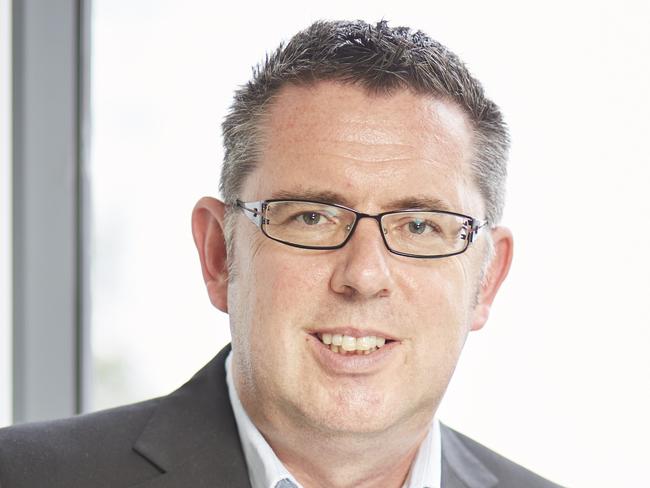
H & R Block tax communications director Mark Chapman said that in contrast to most recent election campaigns, there was a stark difference in medium-term tax plans. But more immediately, there was little to separate the parties.
Both are offering kickers in 2018-19 to 2021-22 tax returns of as much as $1080.
Labor is pitching slightly larger refunds to those on less than $48,000, but is also planning to take two per cent of income above $180,000, costing a $200,000 earner $400 annually until 2022.
“With the short-term stuff, there’s virtually no difference between the two,” Mr Chapman said.
The Coalition is vowing to further reduce taxes from 2024-25 for anyone earning $45,000 a year and up by reducing the 32.5 per cent tax threshold to 30 per cent.
“That’s definitely going to be appealing,” said H & R Block tax communications director Mark Chapman. “It will have a real impact on middle-income earners.”
But, Mr Chapman said, voters would be sceptical about the likelihood of that change becoming a reality given it was more than five years off.
The ANU’s Mr Phillips also said that move was too far away to mean much to people now.
Labor opposes that plan as well and would unwind the cuts set for 2024-25 that passed parliament last year.
WHAT AUSSIES THINK ABOUT TAX CHANGES
Australians are split three ways on Labor’s controversial policy to limit negative gearing and reduce capital gains tax reductions.
An exclusive YouGov Galaxy poll found 35 per cent want Opposition Leader Bill Shorten’s proposed changes, 34 per cent oppose them and 31 per cent don’t know.
Should Labor win the May Federal election and the changes get through parliament, they will come into force from January 1, 2020.
Baby Boomers are more likely to oppose the changes (40 per cent) than Millennials (21 per cent).
And males are more in favour of the changes (40 per cent) compared to 30 per cent of females.
Despite the differing views of Australians from the poll — compiled in late March before the Federal Budget — experts believe the impact will be felt far and wide, including by real estate owners, investors, buyers, sellers and renters.
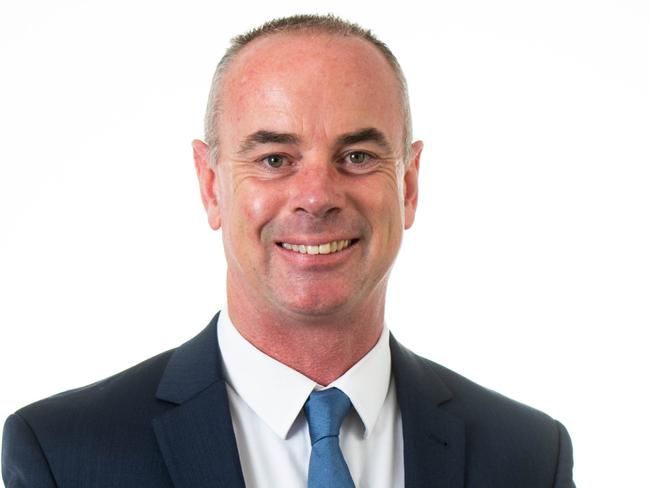
The Real Estate Institute of Australia’s president, Adrian Kelly, attacked the mooted overhaul and said it was a vote-grabbing policy move by Labor.
“We’ve got a property market at the moment that is essentially experiencing a bit of free fall particularly in Melbourne and Sydney and finance has tightened up as a result of the Hayne Commission,” he said.
“If you are going to introduce changes to taxation policy which has worked well for three decades then you probably shouldn’t be doing it in falling market, you do it when the market is quite strong.”
In a new report released this month by ratings agency Moody’s, house prices in major cities were forecast to fall further by 7.7 per cent, while apartments would drop by about 4.3 per cent.
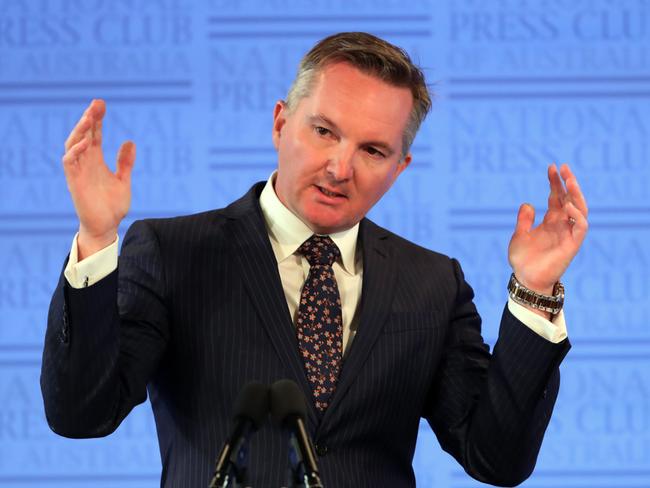
Opposition Treasury spokesman Chris Bowen was last week forced to backtrack on comments on the number of investors who buy new properties and negatively gear them.
He said only 7 per cent of property investors bought new homes, but the Grattan Institute argued the figure was wrong.
They said it was double this — 14 per cent of investors buy new properties rather than existing ones.
Under the existing negative rules there are limited incentives to buy new builds. This is why Mr Bowen is arguing the rules need to be changed.
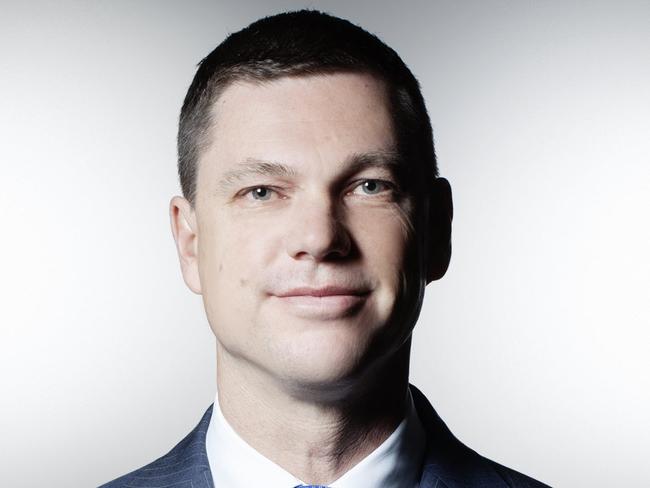
The Property Council of Australia’s chief executive officer Ken Morrison said it was a “precarious” time for the real estate industry due to falling prices and slowed property construction and now was not the time to change policy.
“We are in a fragile phase of the property cycle,” he said.
“Further falls to property prices and construction activity are a risk to the economy, so there are significant warning bells.”
Mr Morrison said it was a “risky time” to be making significant changes to rules around negative gearing and capital gains tax rules.
Mr Kelly said Labor’s policy would not make it easier for entry-level buyers to crack into the market.
“The real problem for first home buyers is the amount of money they need to find upfront for the purchase, they probably need mortgage insurance and stamp duty,” he said.
“That’s why the find it hard to get into the market.”
Mr Kelly said if negative gearing was changed, those already negative gearing and can keep doing so would avoid selling their property, however it would push up rents to cover any losses they might make through selling up.
CAPITAL GAINS TAX CHANGES “SLIPPING UNDER THE RADAR”
The most potent of all of Labor’s planned tax increases is the one that has been getting the least attention so far.
Labor plans to halve the capital gains tax discount from 50 to 25 per cent when assets are sold for a profit.
This move could increase an investor’s tax bill by tens of thousands of dollars in a single year — more than the impact of Labor’s proposed negative gearing crackdown.
Investment specialists say people haven’t yet realised the potential cost of the CGT changes.
Real Estate Institute of Australia data shows that house prices in most capital cities double every decade on average, which means a $500,000 investment property bought today has a good chance of selling for $1 million in 10 years.
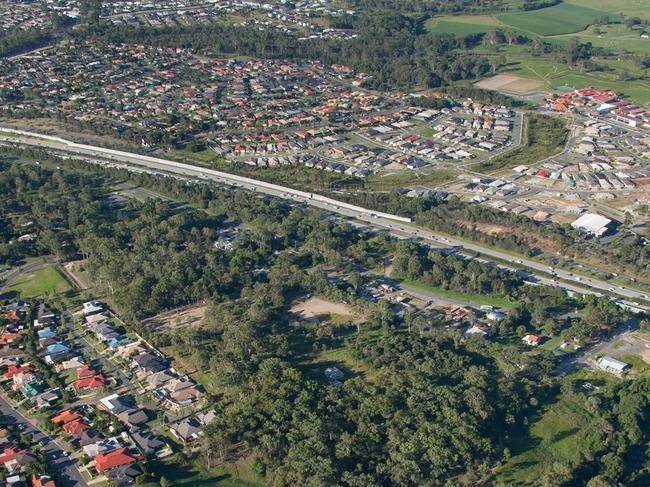
Under current CGT tax rules, half of that gain gets added to an investor’s taxable income for the financial year in which the asset sold, resulting in extra tax payable of up to $117,500.
Labor’s rule change would mean that $375,000 — instead of $250,000 — is added to taxable income, increasing the tax payable to up to $176,250. That’s an extra tax bill of almost $60,000.
REIA national president Adrian Kelly said the proposed tax increase was “a big grab for cash”.
“It will pretty much destroy consumer sentiment. We are already heading down that rocky road, with markets in Melbourne and Sydney in particular in free fall,” he said.
Mr Kelly said Labor’s claims that its property tax changes would make life easier for first home buyers were “a load of nonsense” because rising rents — caused by tight supply as investors avoided property — would make it harder to save a deposit.
“I don’t think a lot of people understand that this is something that can affect their back pocket for years to come,” he said.

It’s not just property investors in the firing line, with share purchases and sales also to be affected by the new CGT rules, said Dixon Advisory managing director Nerida Cole.
She said the planned CGT changes were “slipping under the radar” as people focused more on Labor’s plan to limit negative gearing tax deductions and axe franking credit cash refunds for self-funded retirees.
“But it will have the biggest impact on tax that people will end up paying. People won’t realise until they go to sell that asset.”
If Labor wins the election, investors buying quality property or shares should consider acting before January 1 to minimise the CGT impact.
Ms Cole said Labor’s changes also made superannuation more attractive, because assets held in super only attracted CGT of 10 per cent, and zero per cent once the fund member had retired.
THE TAX BREAKS EXPLAINED
What is negative gearing?
It is when a person borrows money to invest in an asset (usually property) and the income from the investment, such as rent is less than the costs to run the property. This means the owner is making a loss. The investor is allowed to deduct any losses they make on the investment from their taxable income.
What is capital gains tax?
Capital gains tax is applied to the capital profit (or loss) made between the buying and selling price of an asset (after costs are deducted) and is added to your income and taxed at the marginal rate of the individual investor. However, if you’ve held the asset for longer than a year just half the capital gain is added to your taxable income … a 50 per cent discount.


